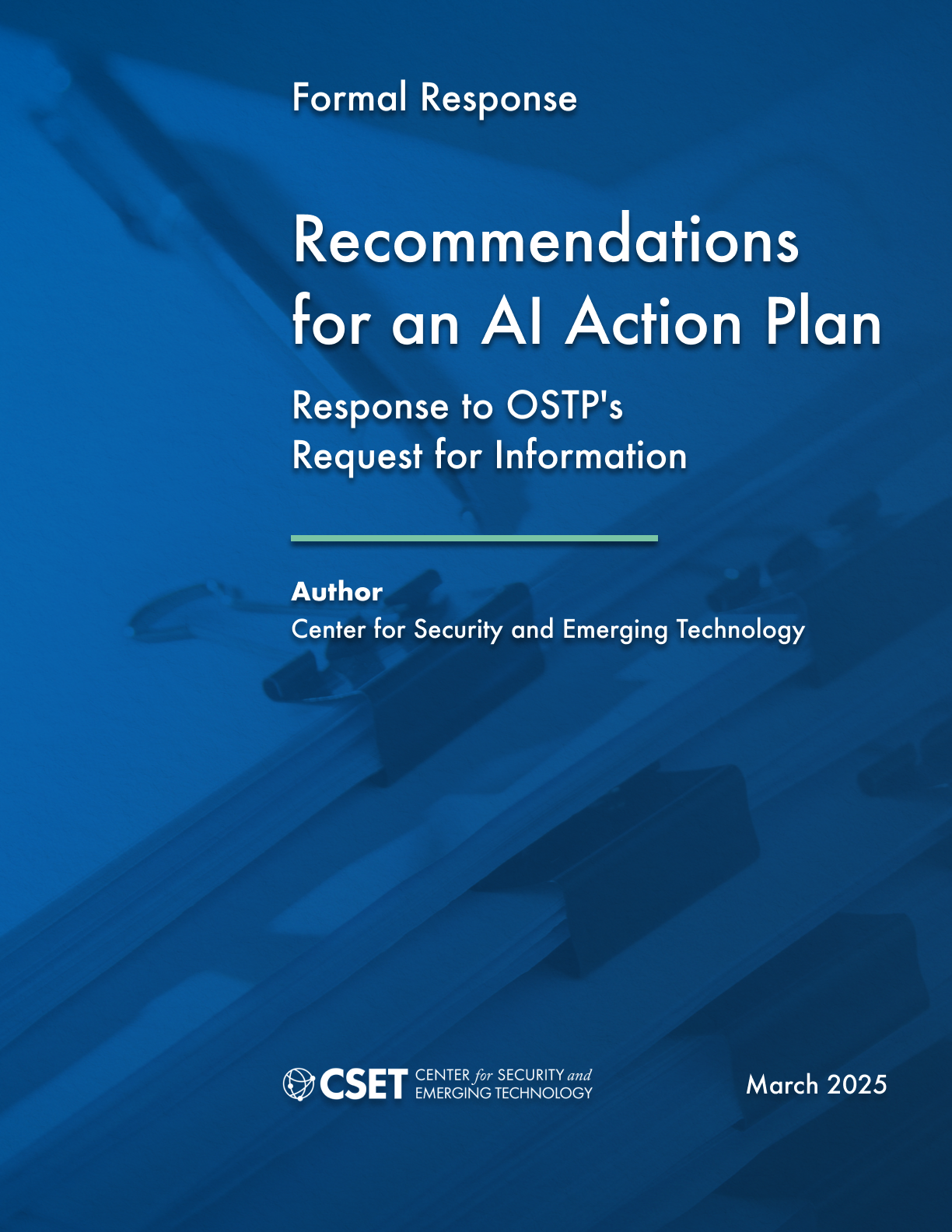The Center for Security and Emerging Technology at Georgetown University has submitted a set of strategic recommendations to guide the United States in developing a robust, forward-looking Artificial Intelligence (AI) Action Plan, as directed by Presidential Executive Order. These recommendations are drawn from CSET’s wide body of research, and fall largely into three categories: 1) steps the United States can take to advance and secure its leadership in developing cutting-edge AI capabilities, 2) initiatives for competition in AI with China, and 3) actions the U.S. government can take to realize the benefits of AI while mitigating its risks.
Key Recommendations
1. To Secure and Advance U.S. AI Leadership:
- Increase federal investment in AI research, including research done at universities, national labs, federally funded research and development centers (FFRDCs), and nonprofits, leveraging private sector collaboration where beneficial, across a range of technical and non-technical fields.
- Invest in AI for science, including in critical fields like biotechnology, and cultivate relevant infrastructure and data resources.
- Stimulate competition and innovation by dismantling market barriers for emerging AI companies, monitoring AI industry mergers and acquisitions, ensuring fair access to critical resources like cloud computing, and promoting open AI models to broaden participation.
- Strengthen America’s AI workforce by significantly increasing funding for technical apprenticeships and community college programs, and establishing a robust AI scholarship-for-service program to attract top talent into public service.
2. To Navigate U.S.-China Technology Competition:
- Enhance U.S. technological security by establishing a dedicated task force within the Office of the Director of National Intelligence to monitor both legal and illicit technology transfers to China.
- Expand intelligence collection and sharing by investing in open-source intelligence focused explicitly on China’s rapidly evolving AI capabilities, and improving private sector cooperation to anticipate and counteract technological threats.
- Lead coordinated efforts on export controls with international allies to reduce China’s access to essential AI components and bolster effectiveness through cooperation. Rigorously evaluate export controls to ensure ongoing effectiveness.
3. To Realize AI’s Benefits While Managing Risks:
- Establish AI incident reporting programs and threat profiles across federal and high-risk private sector uses of AI, enabling rapid response, risk reduction, and greater public trust in AI systems.
- Create clear channels for public recourse and whistleblower protections to quickly address AI-related harms and discourage risky industry practices.
- Implement comprehensive biosecurity safeguards, integrating AI into broader biosecurity frameworks, and clearly defining AI capabilities that pose biological risks.
- Empower federal bodies to drive AI evaluation science by supporting research into testing methods for advanced AI systems and establishing authoritative benchmarks.
- Unify federal AI procurement standards, simplifying compliance for industry, reducing redundancy, and facilitating widespread adoption of secure, effective AI technologies.
CSET’s recommendations are grounded in rigorous analysis and a deep understanding of emerging technologies and their geopolitical implications. Adopting this action-oriented framework will position the United States to maintain global leadership, secure national interests, and harness AI’s transformative potential for all Americans. For a deeper understanding and detailed implementation strategies, we encourage interested parties to review CSET’s full submission.
